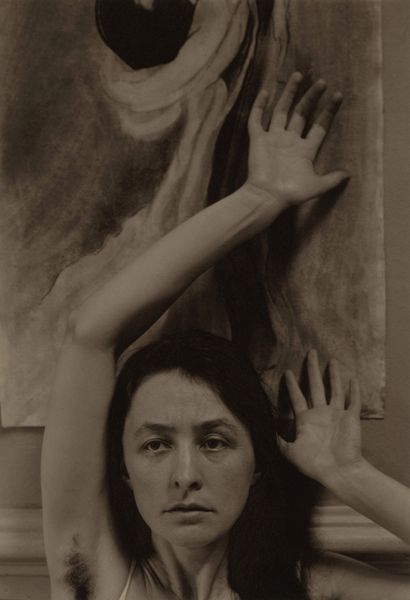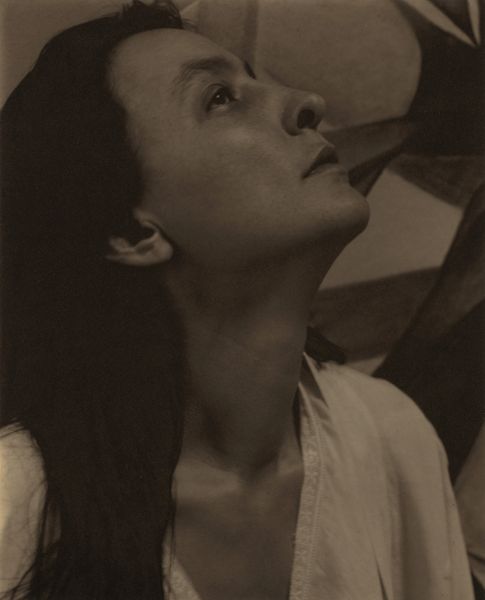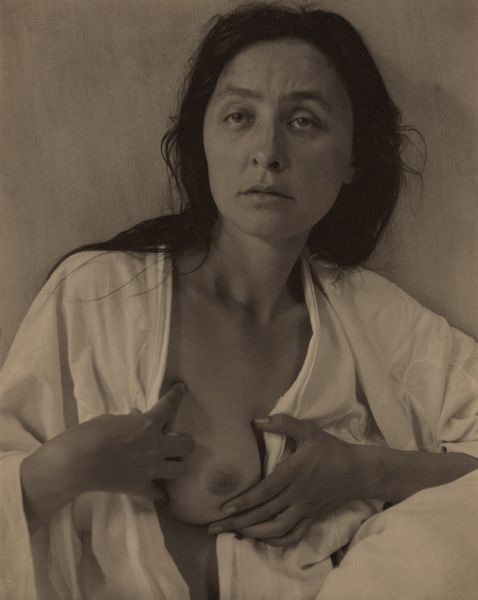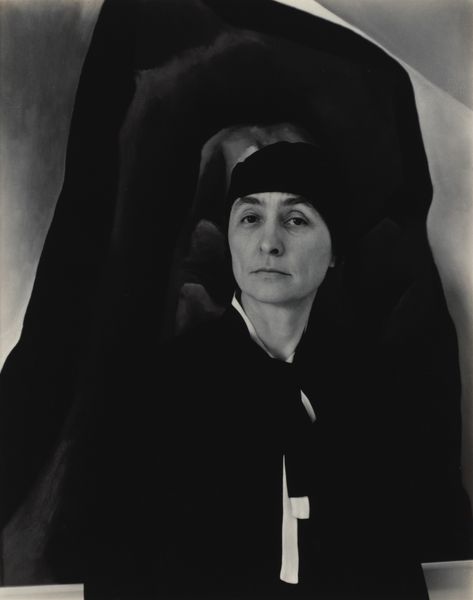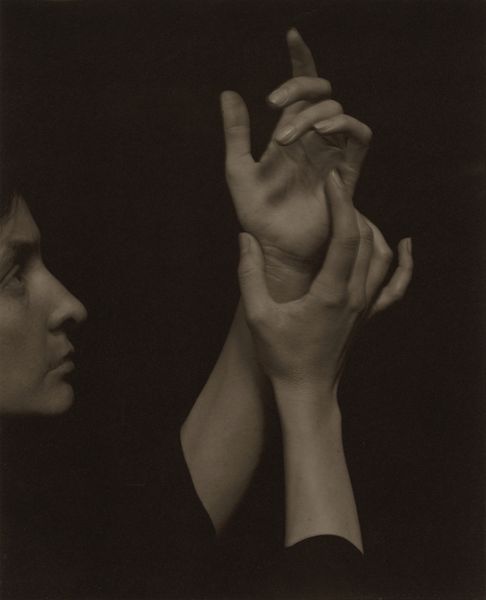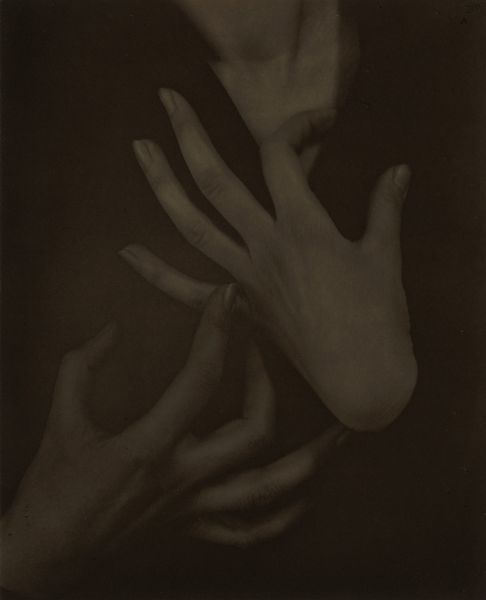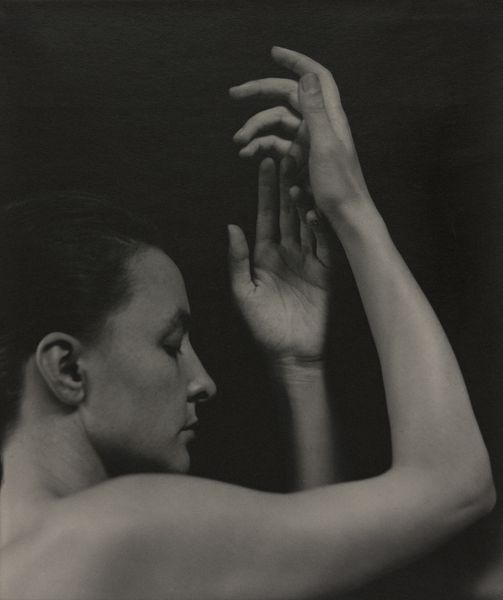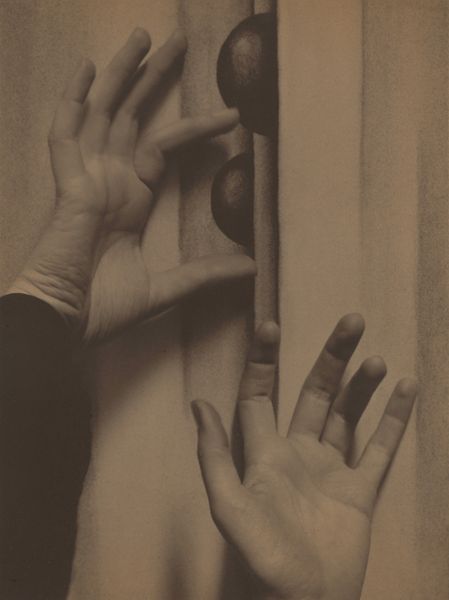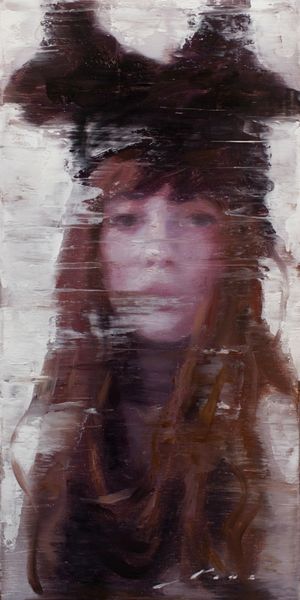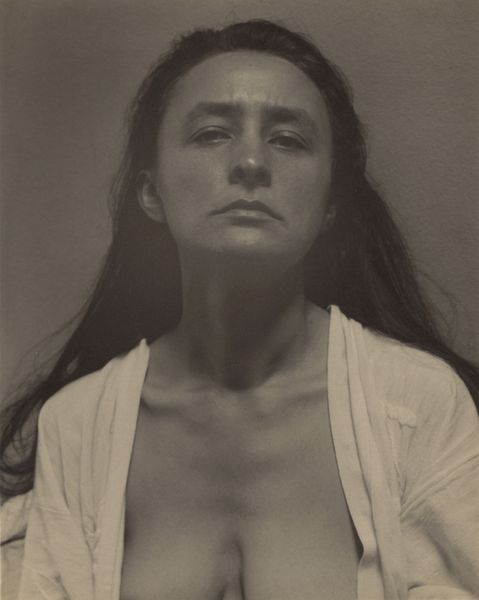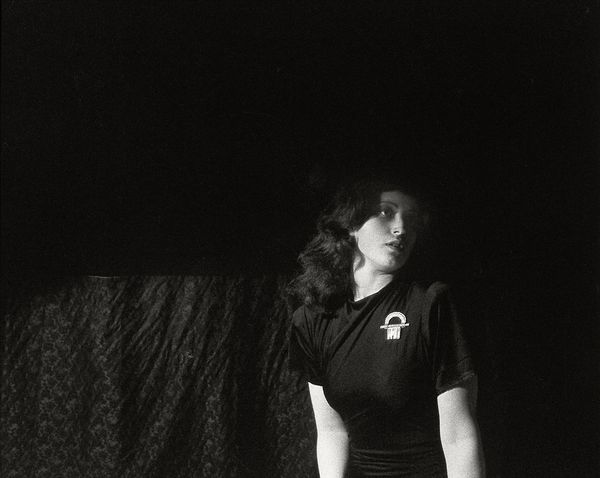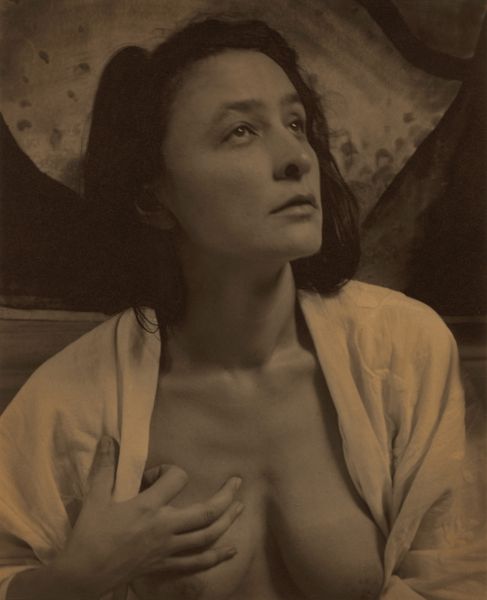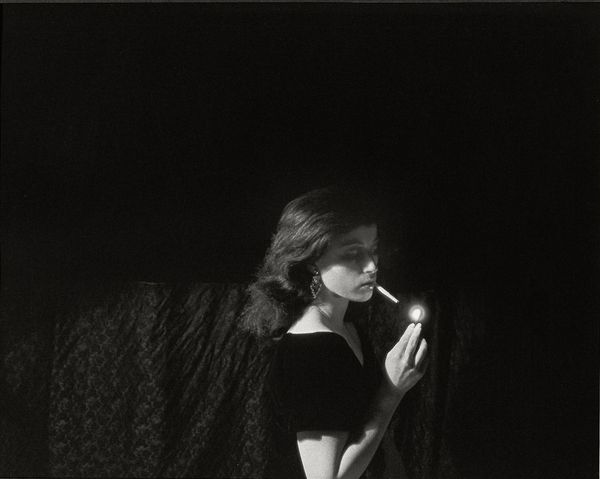
Dimensions: sheet (trimmed to image): 23.5 x 18.4 cm (9 1/4 x 7 1/4 in.) mount: 50.8 x 37.9 cm (20 x 14 15/16 in.)
Copyright: National Gallery of Art: CC0 1.0
Editor: So here we have a gelatin-silver print simply titled "Georgia O'Keeffe" by Alfred Stieglitz, dating probably from sometime between 1918 and 1937. I'm immediately drawn to the textures, the soft tones of the print itself and the way her hands almost seem to be merging with the drawing behind her. What stands out to you? Curator: It is all about labor for Stieglitz. Look at O’Keeffe's pose; the raised arm challenges the societal expectation that a woman’s body must be perfectly manicured to be seen as feminine. The deliberate inclusion of the underarm hair can be interpreted as a powerful assertion of control over her own image and body. This rejection of imposed labor reveals how women are positioned and forced to invest countless hours to maintain beauty standards, standards dictated by men. Editor: That's a great point. I was focused on the hands, their almost desperate reaching, but I didn’t immediately connect it to labor in the broader sense. Is Stieglitz highlighting that through the medium of photography itself, with all its processes? Curator: Precisely. The gelatin-silver print was a commercially viable, repeatable photographic process, directly linked to the rise of industrialism. By presenting O’Keeffe through this very industrial medium, he comments on the commodification of the artist's image. It shifts our attention from the individual genius to the means through which that supposed genius is produced and distributed. Editor: So it’s less about individual artistic expression and more about the structures that allow that expression to exist, or perhaps control it? Curator: Exactly. How might O’Keeffe herself respond to the way Stieglitz portrays the image? Would she interpret her presentation here in a positive light, a collaborative, self-empowering stance, or as a product to be produced? These are the questions we, as viewers, are left to reconcile. Editor: I never thought about photography that way. I will rethink portraits, looking closely into materiality. Thanks for offering a new perspective. Curator: Absolutely, considering the historical production and manufacturing process, reveals new cultural depths.
Comments
No comments
Be the first to comment and join the conversation on the ultimate creative platform.
